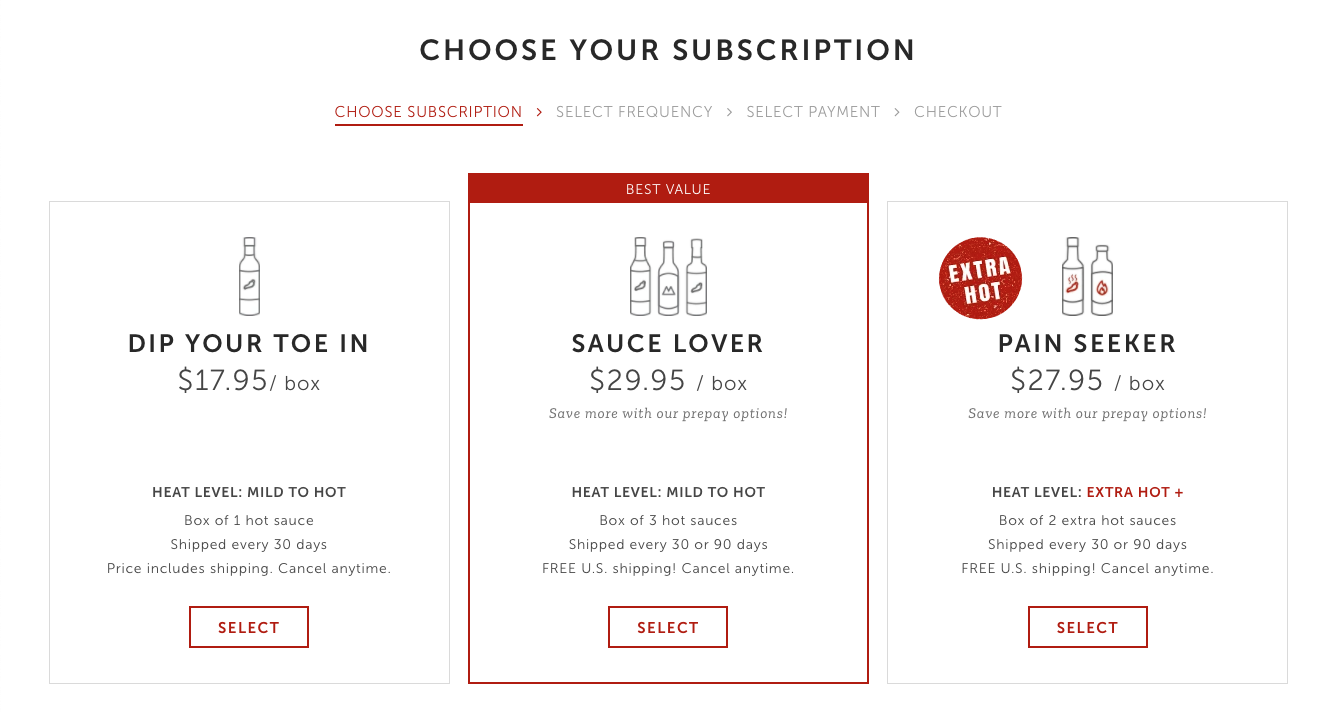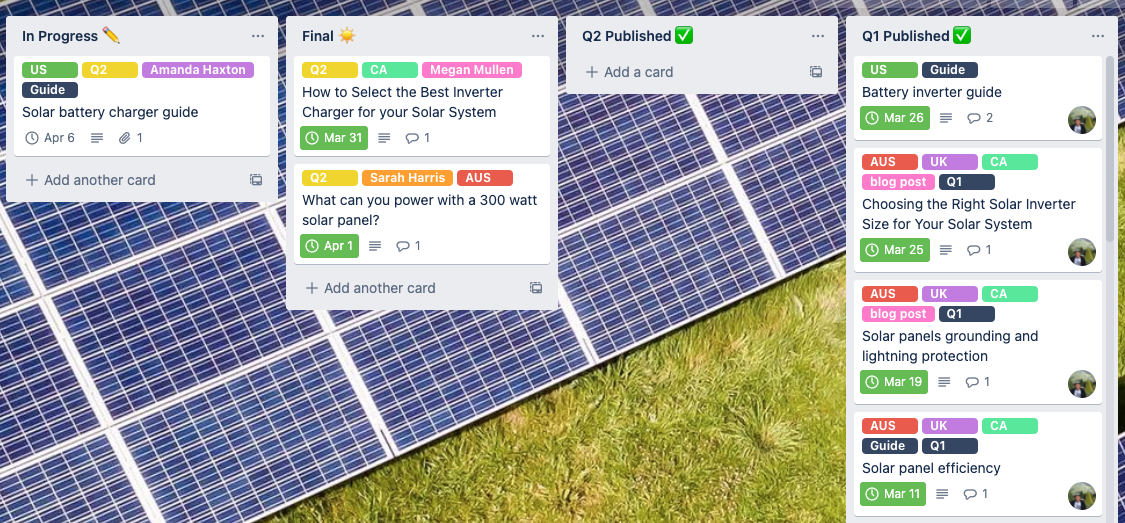9 eCommerce Trends Driving Online Growth in 2022
Author’s note: This post was originally published in 2021. It has since been updated for 2022.
2020 and 2021 brought a whole new challenge to ecommerce growth agencies and their partners. As the world shut down in 2020, companies unprepared to sell virtually rushed to bring their products and services into digital spaces. As a result, Shopify, like many other ecommerce CMS (content management systems), saw massive growth, increasing revenue by an unbelievable 89%. This translated to a mind-boggling $2.9 BILLION dollars.
If you recognize your own ecommerce business as part of the above trend, it’s probably time to re-evaluate your online store to see if it’s adhering to best practices and staying up to date as we move further away from 2020 (cheers to that). We put together this guide to help identify areas of growth for your ecommerce sales in 2022.
eCommerce Trends
1. Efficiencies will be rewarded over massive growth.
With the boom of the pandemic, ecommerce companies saw massive increases in sales as users prioritized online shopping versus a retail or pick-up-in-store option. A large amount of ecommerce companies built entirely new business models based on a pandemic economy. Venture capitalists and investment firms saw this as an opportunity to get in at the ground floor and invest significant cash into the ecommerce space.
Flash forward to 2022, with concerns over inflation and some economic rebalancing due to a myriad of factors (including the housing market, the situation in Ukraine, etc.) ecommerce sales remained steady or stagnant for the first time in over two years. This has lead to a lot of investor and venture capitalist panic, and cash in investment rounds (such as your Series A, Series B, etc.) not as readily available.
Companies that have been on a high cash-burn rate trajectory over the last two years are now scrambling to remain as cash flow positive as possible, and find sustainable ways to grow during this climate. We’ve seen it hit scaleups in the tech world the hardest – but ecommerce has certainly been affected as well.
As you continue to advertise your ecommerce brand over the course of 2022, factor in the value of a sustainable growth plan over the most possible growth in terms of volume. Efficiencies in CAC, cost per sale, and more will be crucial for remaining steady over the rest of the year.
2. Mobile: where shoppers are spending.
79% of smartphone users have made a purchase on their phone in the last six months. That says it all, doesn’t it? It’d be nice to tidy up this section with two sentences, but that’s just the tip of the iceberg.
Online shopping continues to move more to a mobile-dependent space. In 2016, mobile commerce sales totaled at $0.97 billion globally. That figure reached $3.56 billion in 2021 – over 3x growth in five years. In addition, it’s estimated that up to 73% of eCommerce sales will take place on a mobile device in 2021. Why such a large increase in such a short time frame?
Mobile commerce has skyrocketed for three main reasons: convenience, accessibility, and increased screen time.
In the US, mobile device users are spending 24% more time on their smartphones daily than they were in 2016. Social platforms and ad networks have adapted, prioritizing ads so that they’re served on mobile-friendly websites and incentivizing advertisers to have a mobile-friendly experience.
Mobile shopping isn’t only about purchases online though. With the rise of BOPIS (buy online, pickup in store), users are spending more time reviewing products online to make informed purchasing decisions. Also, over 80% of shoppers said they have used a mobile phone inside a physical store to look up product reviews, or compare prices. Mobile commerce is more than a trend. It’s a movement. If your eCommerce site isn’t designed mobile-first, you may want to re-evaluate.
So, the question is: does your site have a beautiful mobile experience? If not, get your booty to UpWork and find yourself a UX designer yesterday.
3. Subscriptions: not just for binge-watchers.
The subscription movement may have started with Netflix, but it sure didn’t stop there. Subscriptions themselves have transformed from a service or product subscription in niche categories to a more practical auto-renewal subscribe-and-save program. By locking in users for auto-recurring orders, brands often reward users with a discount.
This helps eCommerce businesses tremendously; they can pay more to acquire customers because the LTV (lifetime value) of a customer increases tremendously when their purchase auto-renews. This practice largely started because of Chewy.com’s Autoship program, but CMS such as Shopify and Woocommerce are adapting to allow apps and plugins to do the same thing for smaller online stores.
Is your service or product rife for subscription? Have you found success?
4. TikTok has changed the game.
While Instagram still remains a great place to showcase products and create great content, the real disruptor in 2022 is TikTok. TikTok was the most visited site in 2021, beating out the likes of Google, Facebook, Amazon, Reddit, and more. In 2022, that trend has only continued.
TikTok is a great place to showcase your product in a fun, approachable, and informative way. Since it’s a video storytelling platform, it allows e-commerce brands to try new ways to reach their target audiences. Whether it’s advertising user generated content, informational and educational videos, or using the new Spark Ads format, TikTok ads have something for you.
5. Headless commerce: leaving Shopify out of it.
For large-scale brands, headless commerce promises to be an early disrupter. This API-driven approach uncouples the front end of your site from a back-end eCommerce platform. Instead, systems communicate via APIs.
Why do this? For starters, it allows for customization far beyond standard eCommerce CMS. As great as Shopify, Woocommerce, and Magento are, for large scale companies like Nike, Overstock, and more, their needs far outweigh what most CMS provides.
Additionally, the usage of APIs allows for content management beyond the eCommerce site. Headless commerce can allow for the easy distribution of mass data between the data source and marketplaces like Amazon, Ebay, and Walmart. For large-scale companies distributing their products across multiple platforms, this is a transition that provides scale.
Even if you’re not an Overstock or a Walmart, understanding the future of eCommerce can help you plan for your business’ future: what are you doing to adapt?
6. Pay options: dollar bills are a thing of the past.
Have you noticed that a lot of eCommerce sites have banners promoting buy now, pay later options through third-party services like Affirm, Klarna, or Paypal Pay in 4? Payment flexibility within eCommerce platforms has introduced a new wave of users who finance larger purchases that they wouldn’t normally make. Breaking a large purchase up into four monthly payments, while still allowing for the vendor to be paid immediately, sounds too good to be true – but it isn’t!
It doesn’t stop with financing options – digital wallets allow for quick and easy payments on eCommerce platforms. Online shopping becomes even easier with one click payments such as Apple Pay, or PayPal checkout. Ease of use, coupled with additional payment options allows users to pay however is convenient for them, and opens up a new market of potential customers.
Don’t have a payment plan installed on your site? You’re missing out on beaucoup revenue!
7. AR/VR: more than just for gamers.
Augmented and virtual reality is becoming a powerful tool in the customer experience. One of the major complaints about ecommerce is that users don’t have the ability to test or visualize how products will be in person. Augmented reality changes that and allows users to see 3D models of products for a much better idea of what they’re actually buying.
Virtual reality goes even further and allows users to place items in the world virtually so you can see how a vase looks on your counter, or a photo on your wall. 35% of users say they are more likely to purchase a product online if they could virtually “try-on” a product before purchasing. This also helps cut down on return cost and potential customer dissatisfaction, building brand loyalty.
Plus, it’s pretty damn cool. Where does AR or VR fit into your customer experience?
8. Personalization: making your customer feel like you only have eyes for them.
When advocates or politicians talk about the need to have privacy online, rarely is it ever discussed how data creates a personalized web experience. Certainly there is a need for increased privacy for users, as well as better data collection practices, but this should not come at the expense of a personalized web experience. It’d be bad for advertisers, it’d be bad for users both to have a non-personalized ad experience on social platforms, display networks, and more. In short: there’s a more nuanced way to approach this.
Even more so, personalization is incredibly important for eCommerce businesses. Personalization for eCommerce can be as simple as having recommended products based on the user’s browsing history within your site. It can be as complicated as dynamic content based on acquisition source and A/B testing user flows for a multi-touch personalized experience.
Personalization is such a fascinating concept because it’s an easy way to increase conversion rate, average order value, and engage recurring customers on your site. AI powered personalization has produced many fascinating results, showing that revenue lift can be directly tied to a personalized user experience within your eCommerce site.
Let’s get personal with your customers. What does this look like for them?
9. eCommerce content marketing: welcome to Tuff’s world.
Many eCommerce growth agencies are using paid acquisition channels like Facebook, TikTok, Google Shopping, Instagram, and more to generate revenue and acquire new customers. The problem with paid acquisition, however, is that it can be difficult to acquire users at a ROI that makes sense for your business.
Tuff has seen success with organic eCommerce content marketing for multiple brands. Ranking for non-branded keywords pertinent to your product can help reach users organically in a much more cost effective way for the long term. We recommend balancing paid acquisition with content marketing so there’s a healthy approach to short-term wins, and long-term gains that can drastically increase the number of online shoppers coming to your eCommerce site.
Know you need juicy content but don’t know where to start? Let’s talk!
Conclusion
It’s too soon to tell whether or not all of these trends will be here to stay. That said, it’s likely that many of these eCommerce trends in 2022 will persist long after this year is over. When eCommerce trends stay they turn into best practices for a holistic eCommerce business to implement. Three years ago, Instagram was criticized for its implementation of IG-story advertising, and now it continues to be one of the hottest ways to market to users on social media.
eCommerce marketing is not as scary as it may seem, but it’s nice to have help. As a growth marketing agency, we’ve partnered with over 50+ brands in the last 4 years to couple eCommerce trends and growth marketing techniques for scaling eCommerce businesses. Want to learn more? Download a sample growth proposal today!

Richard has spent the last five years working at digital agencies, exploring various industries and company lifecycles. I’ve created and implemented growth campaigns on just about every platform for startups, $20,000,000 a year companies, and everything in-between. When not at work, I can be found cheering on the Penguins or Steelers, spending time with my wife and son, playing disc golf, baking, or walking my dogs.









